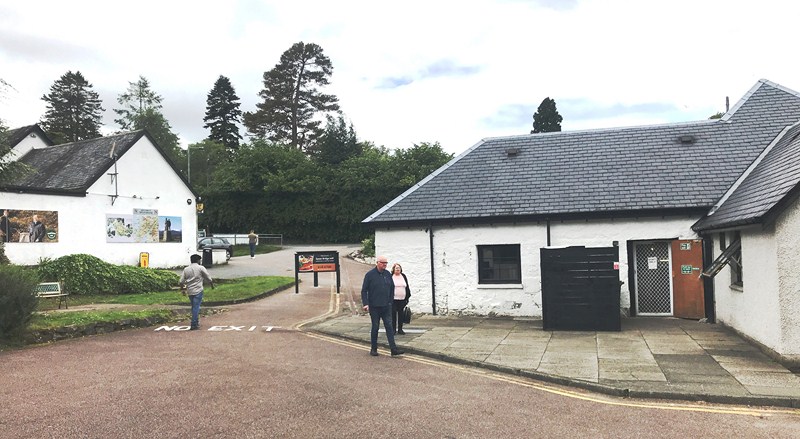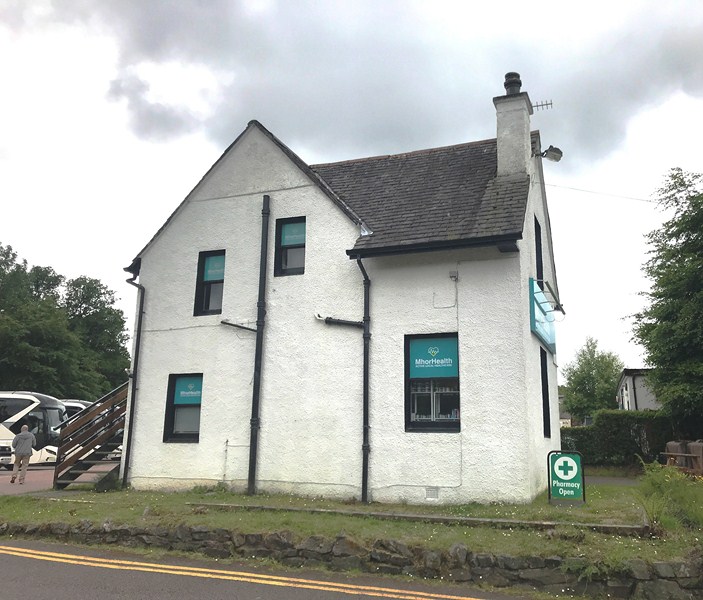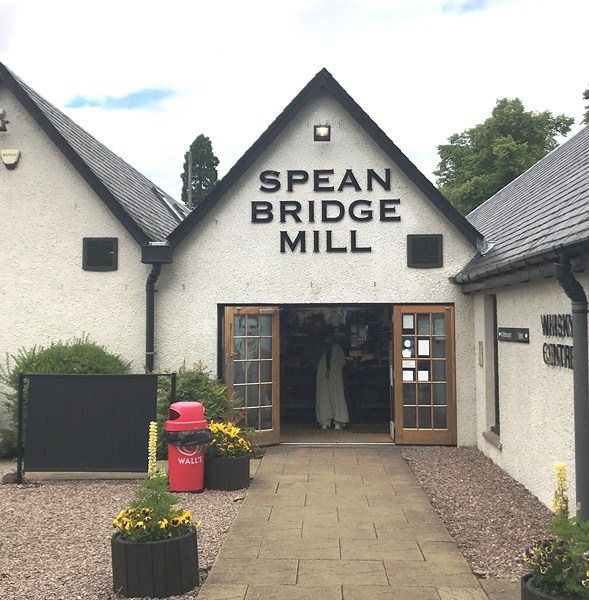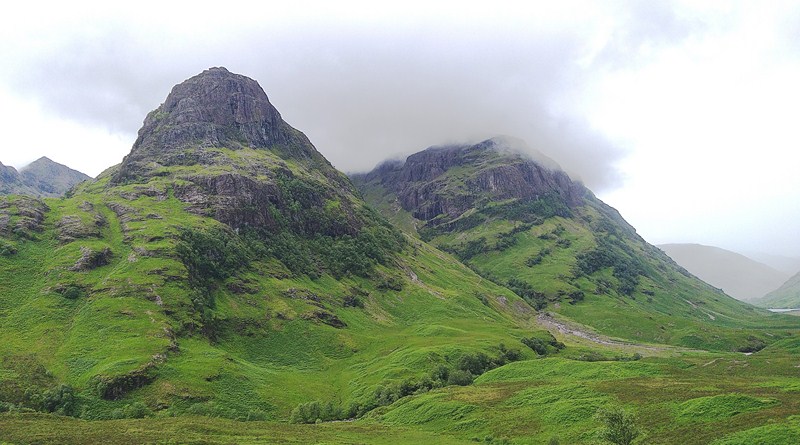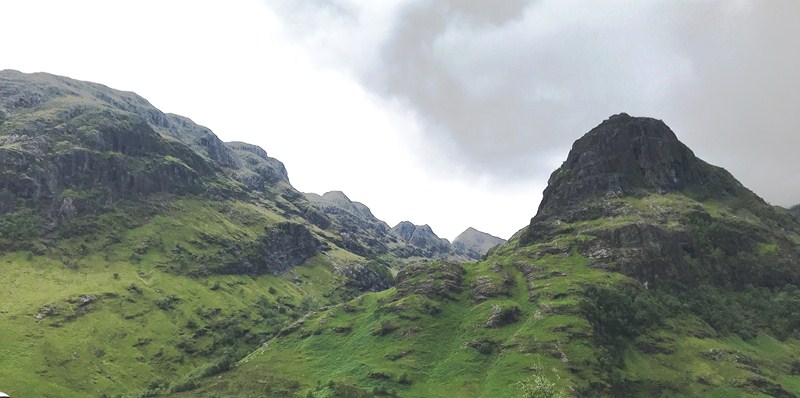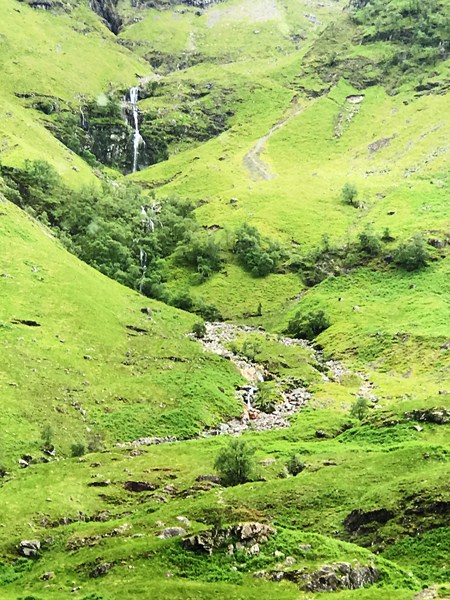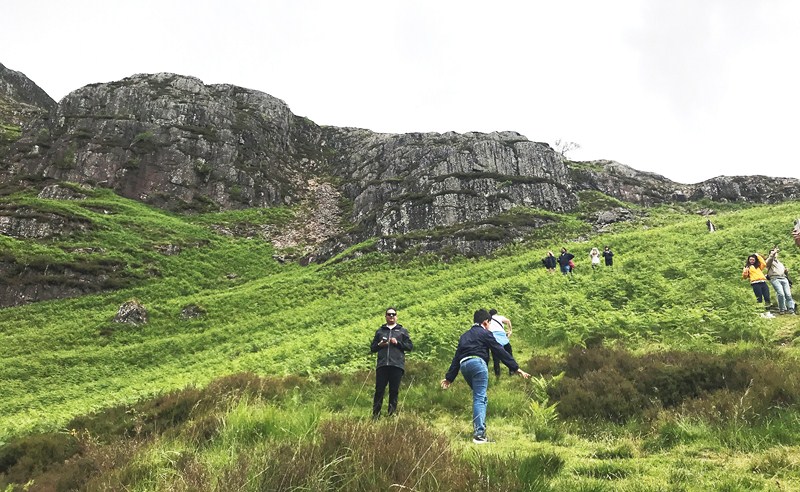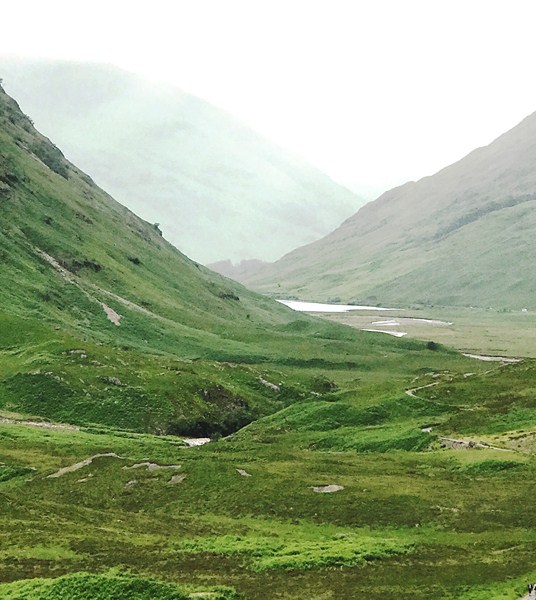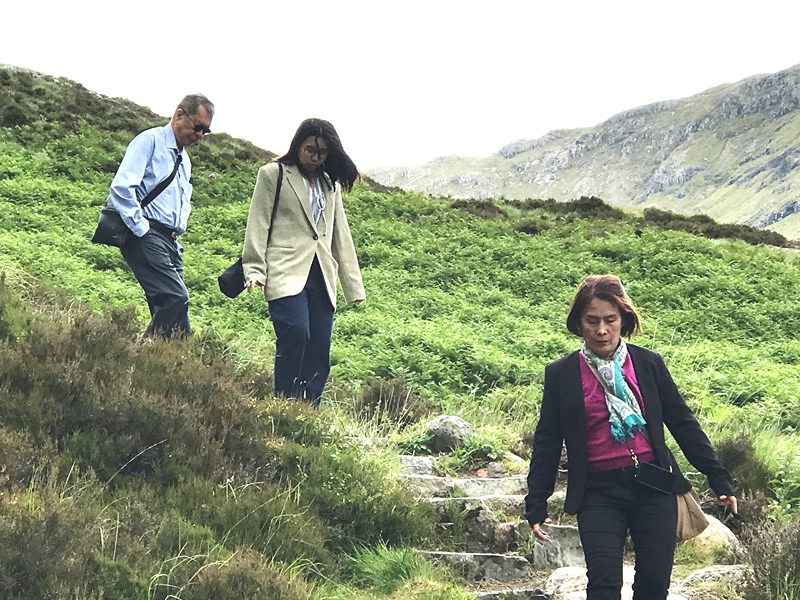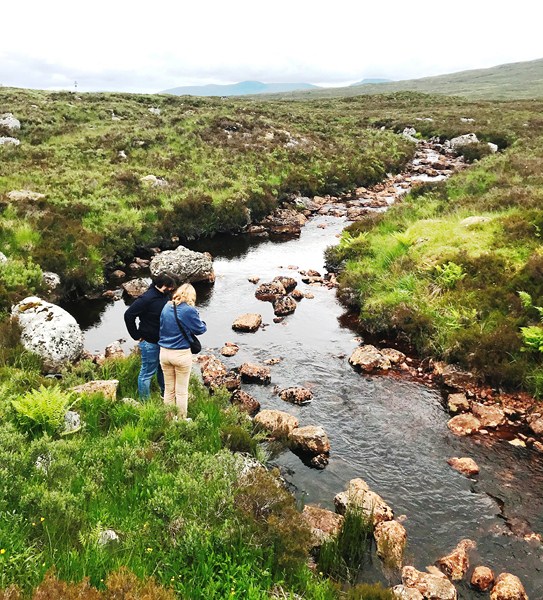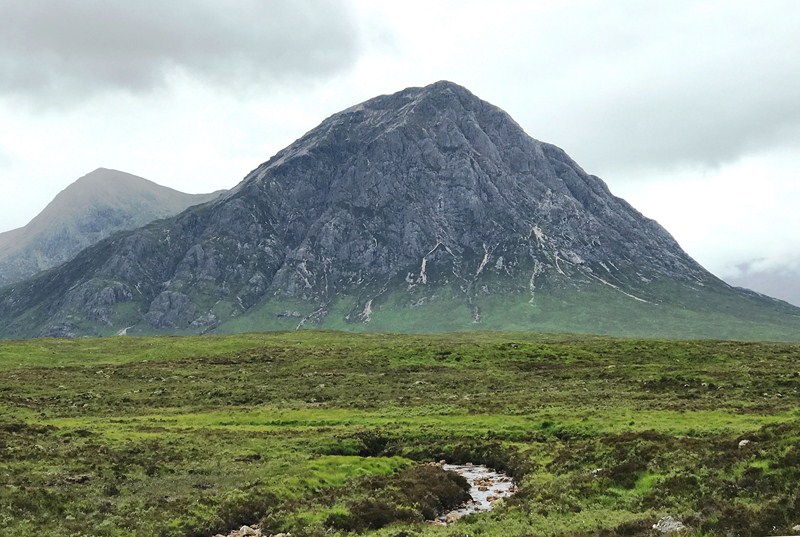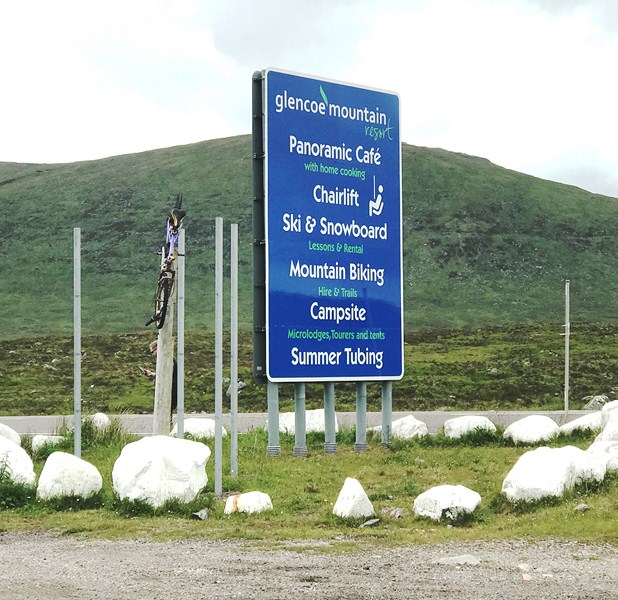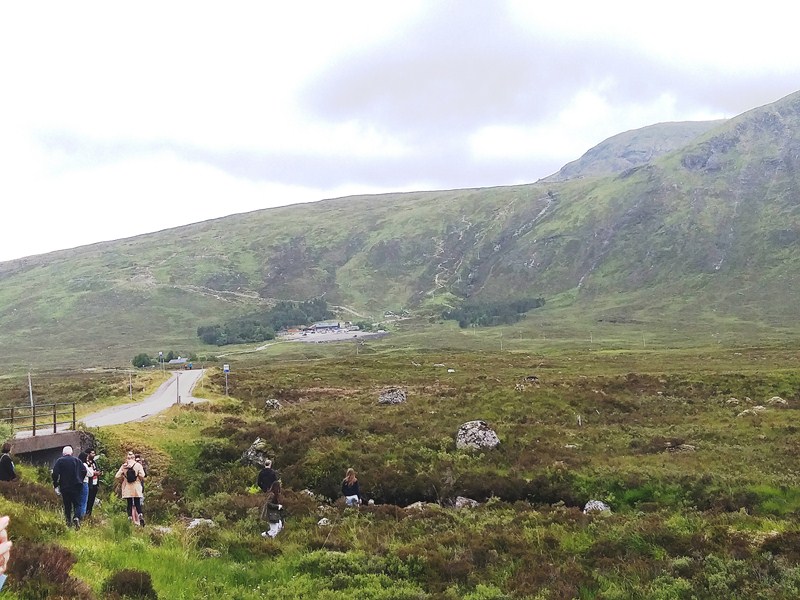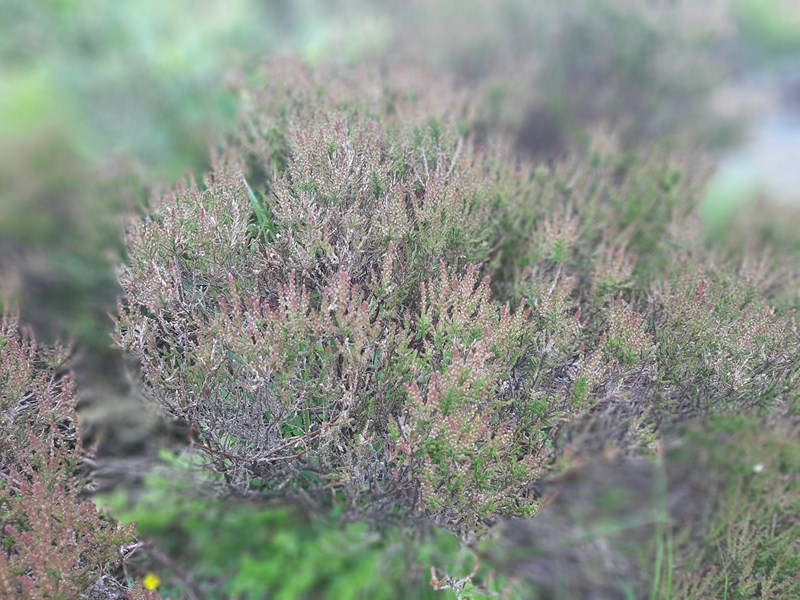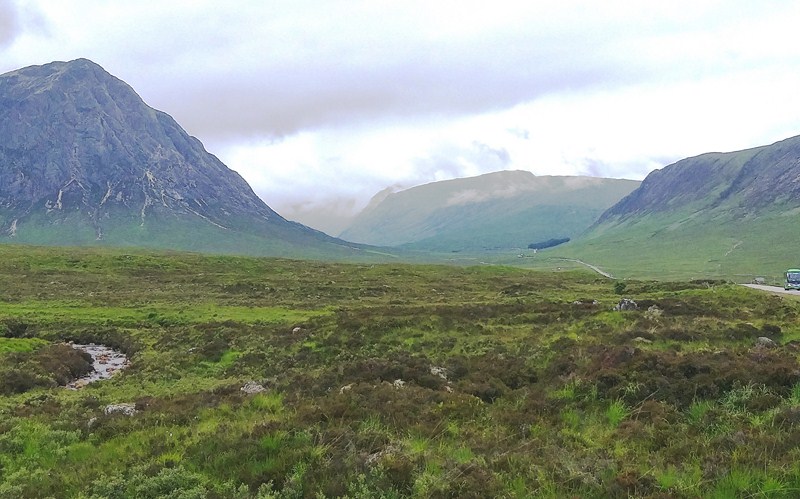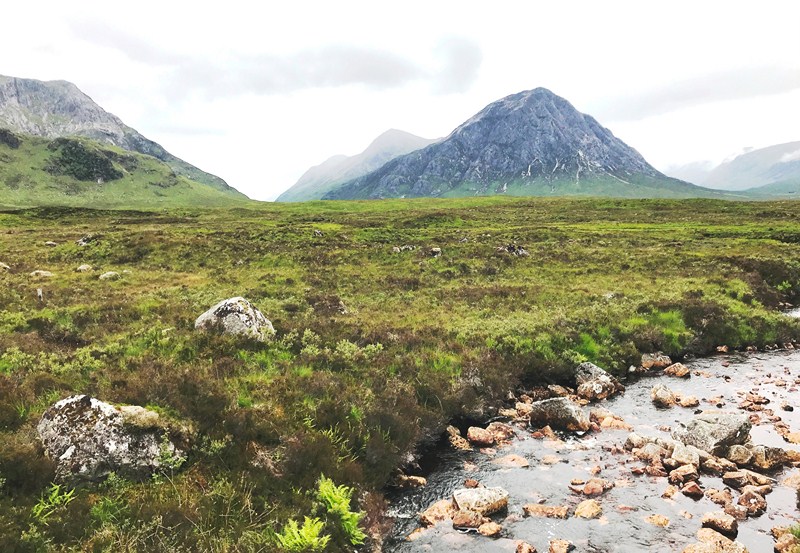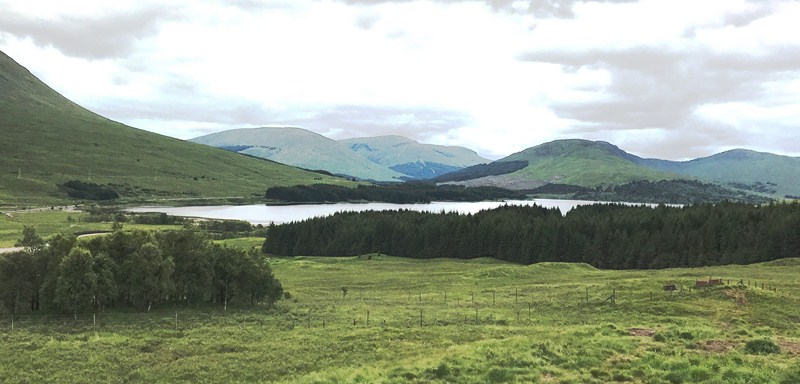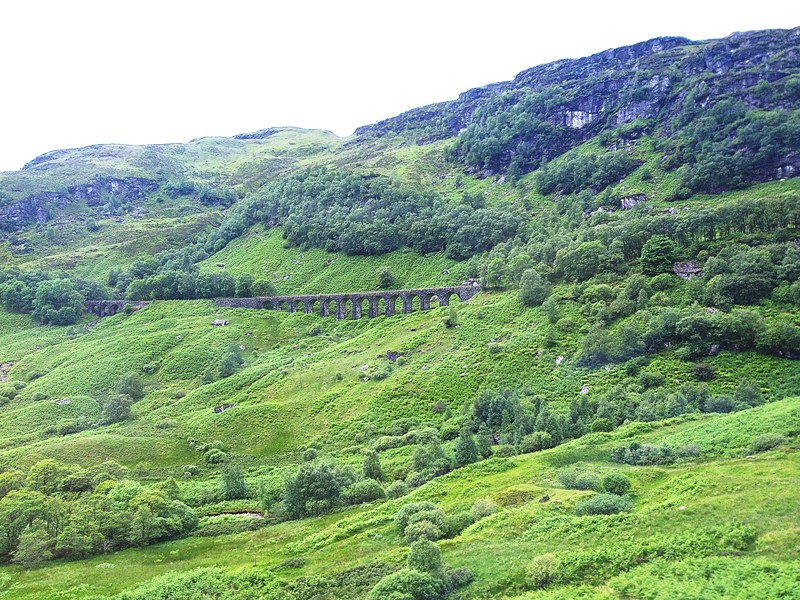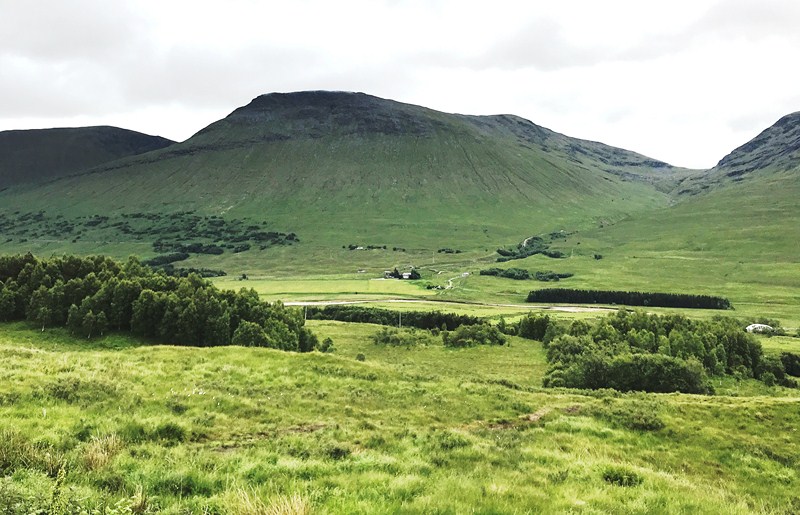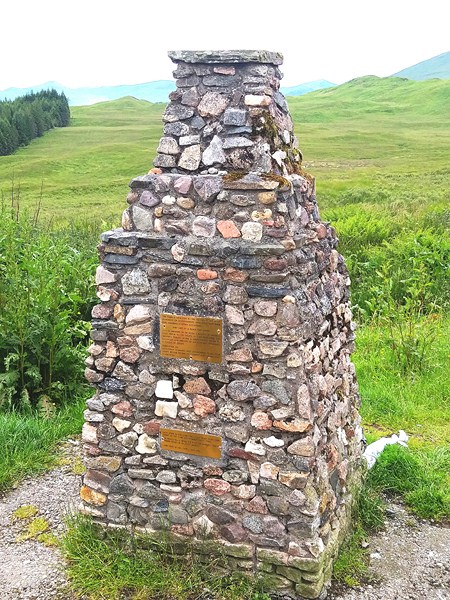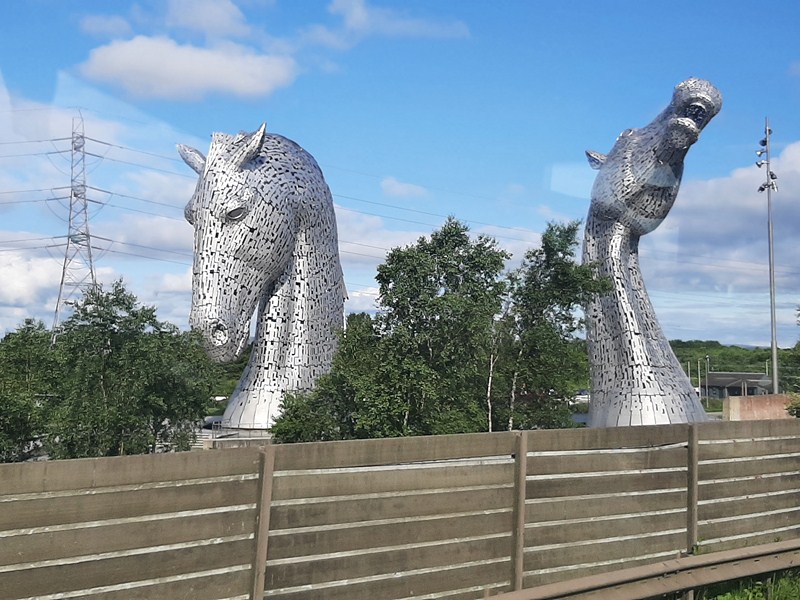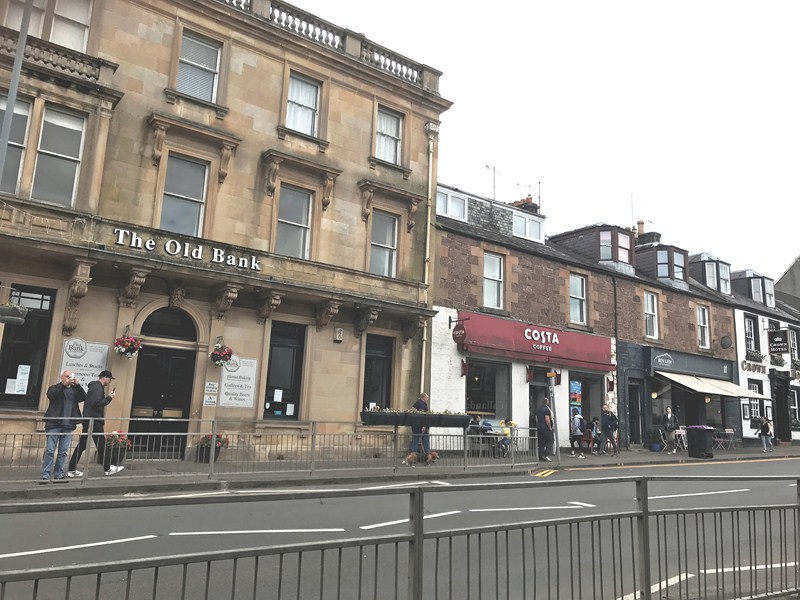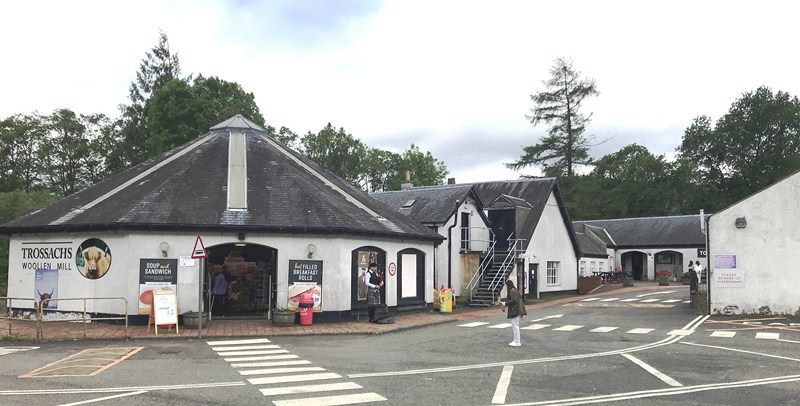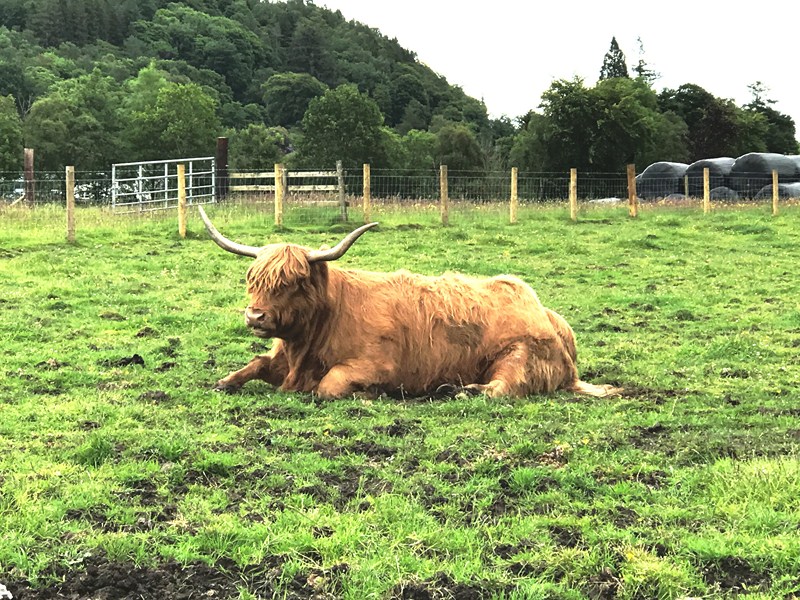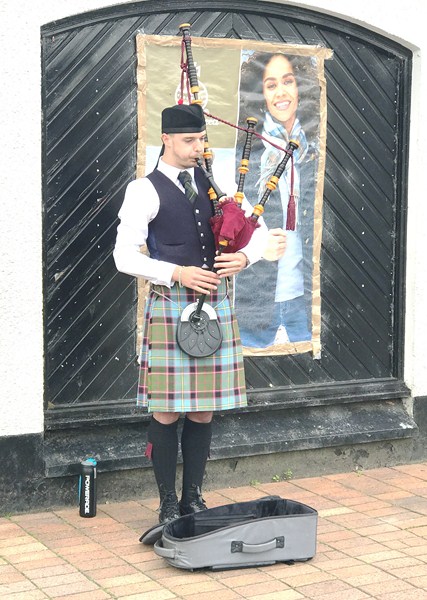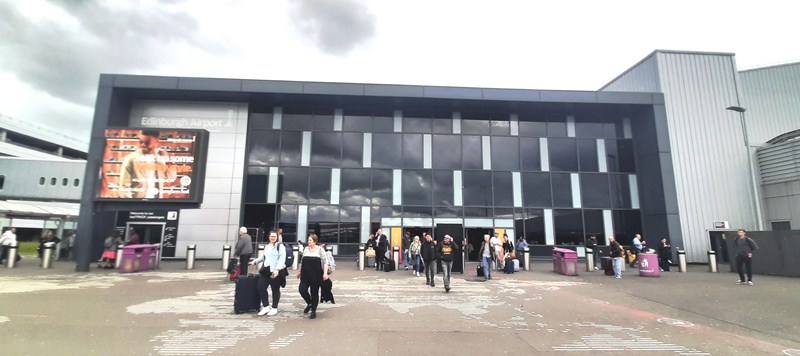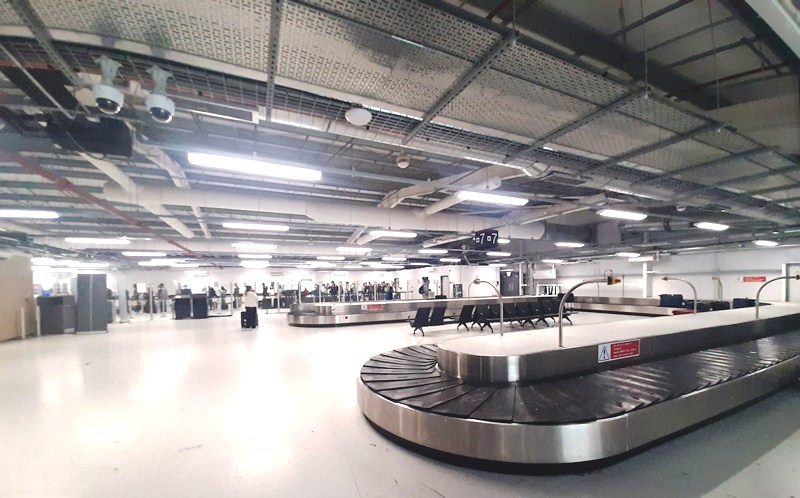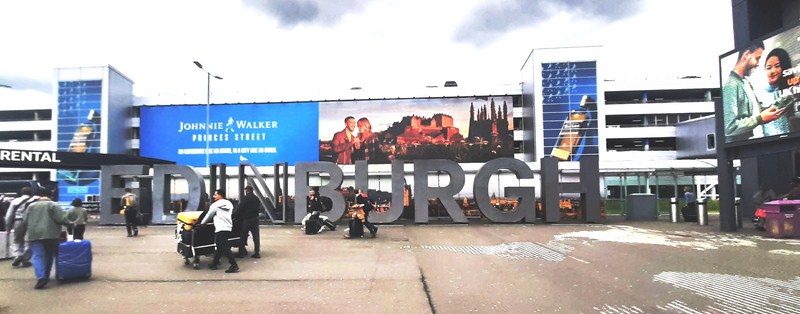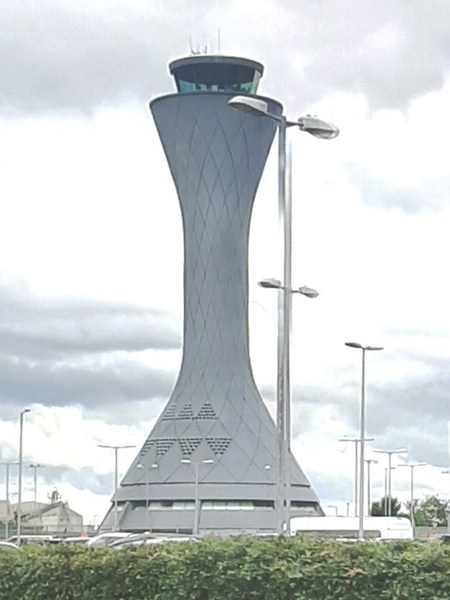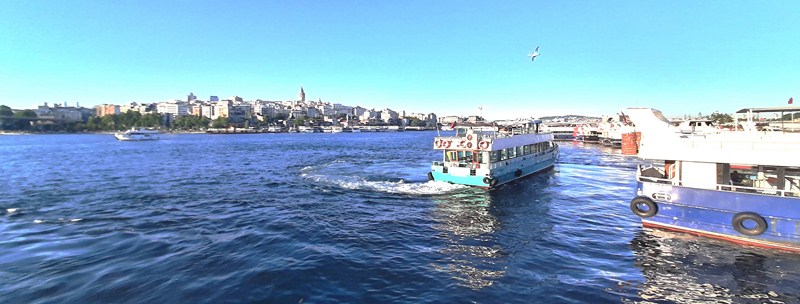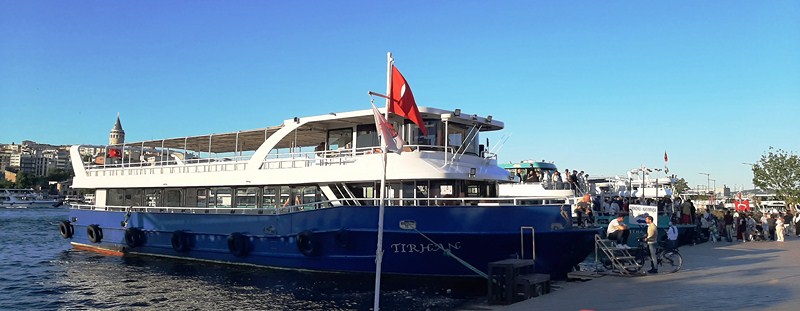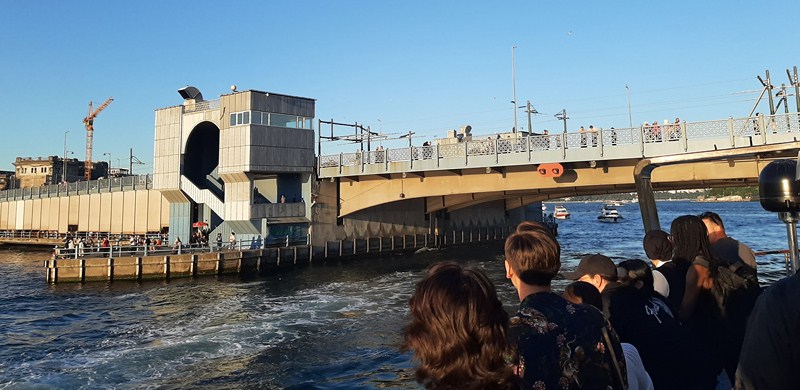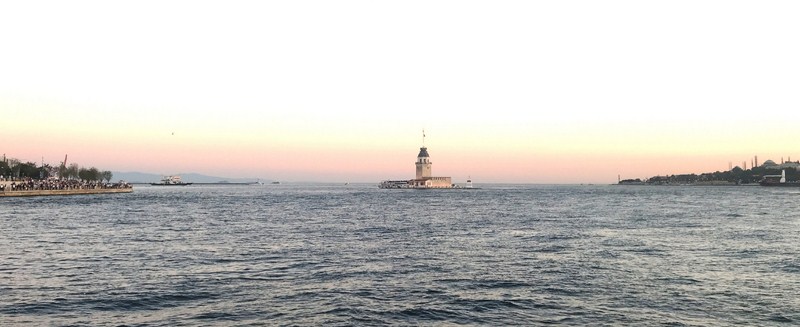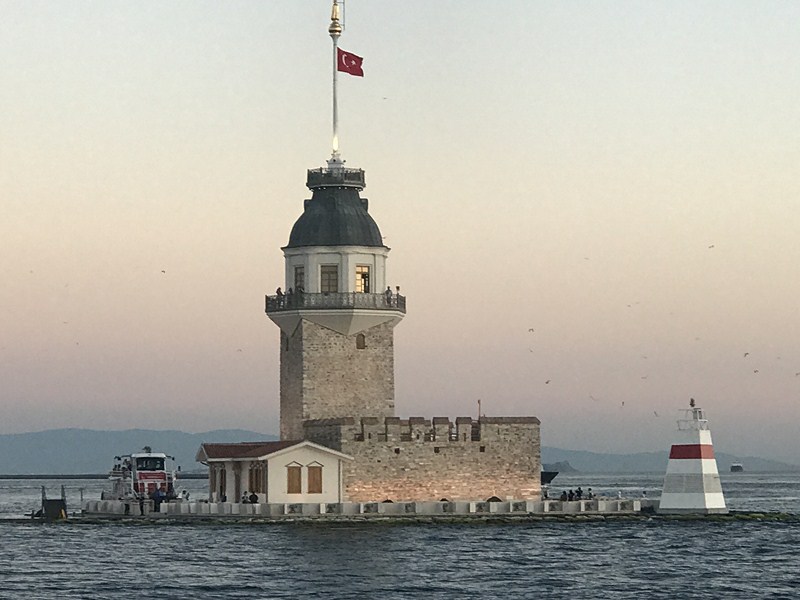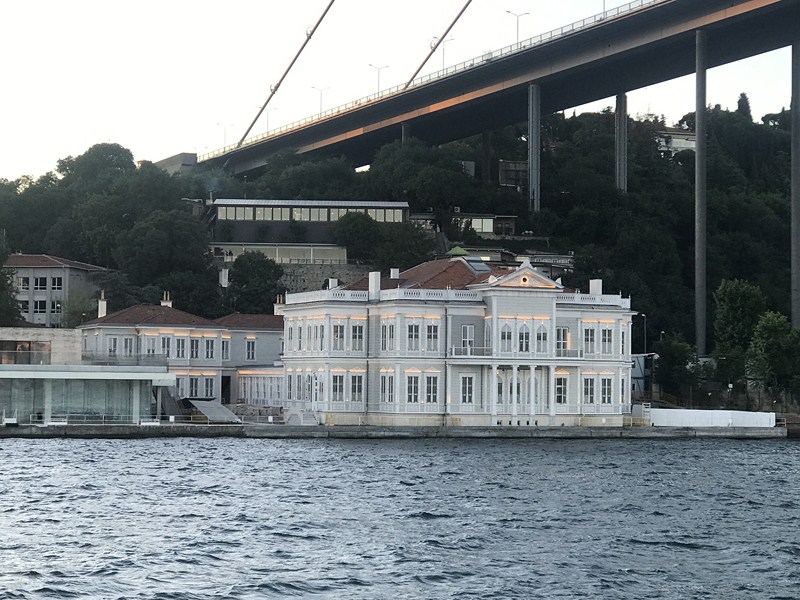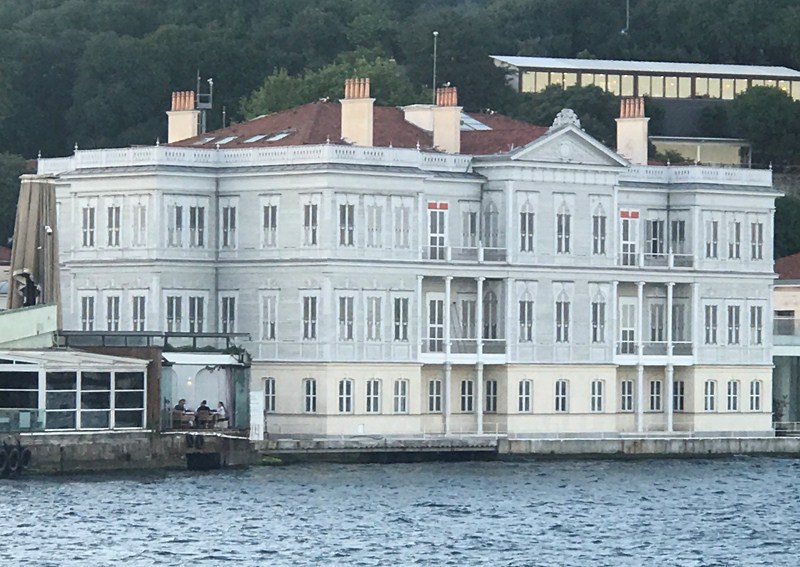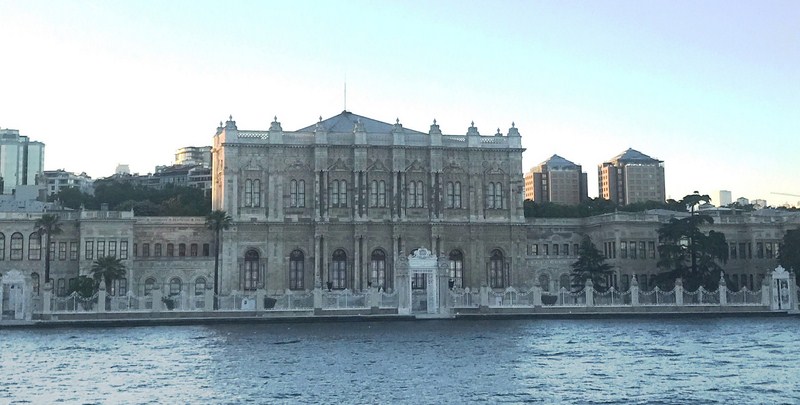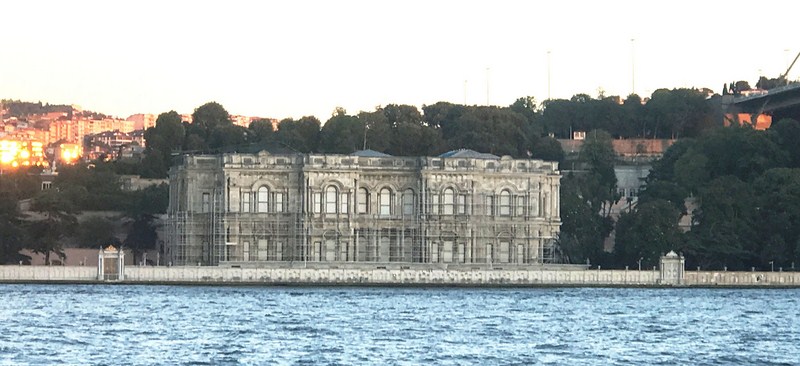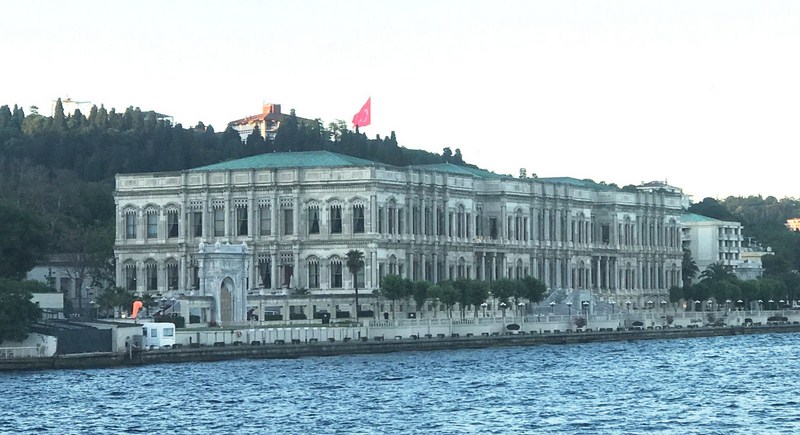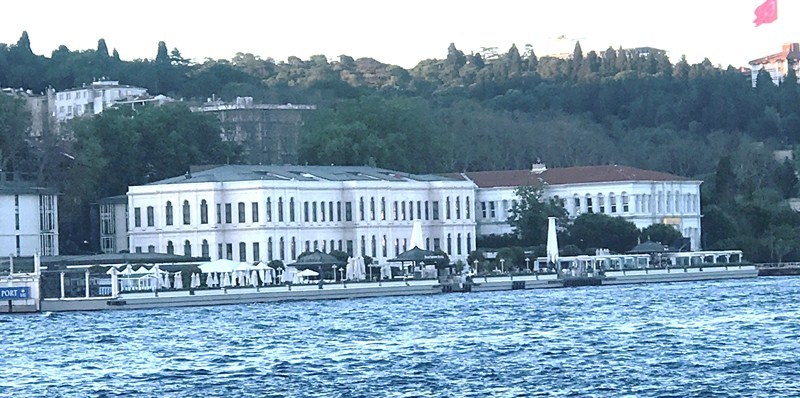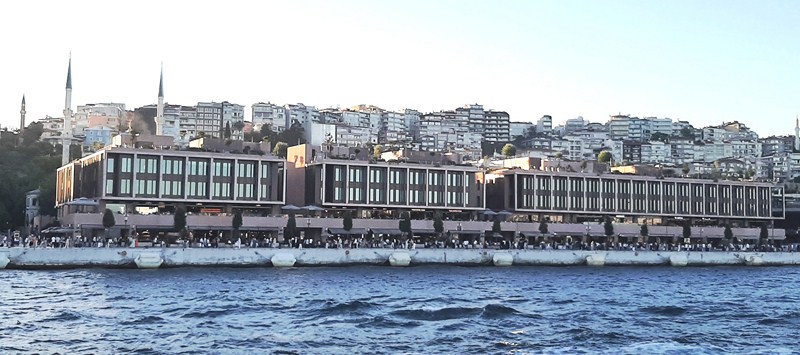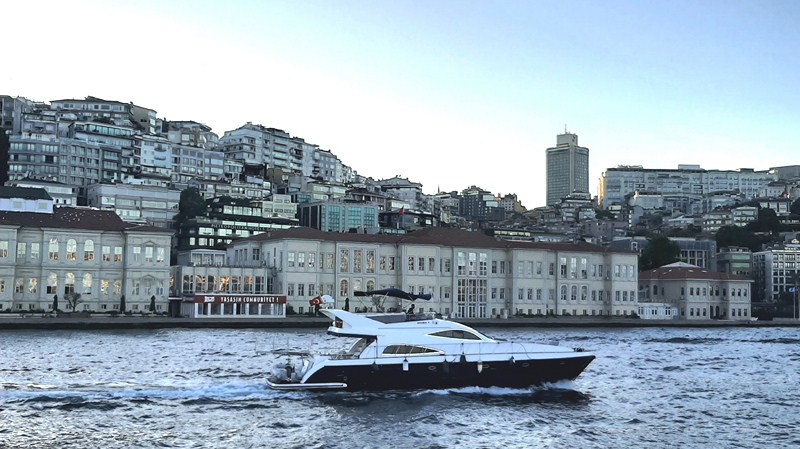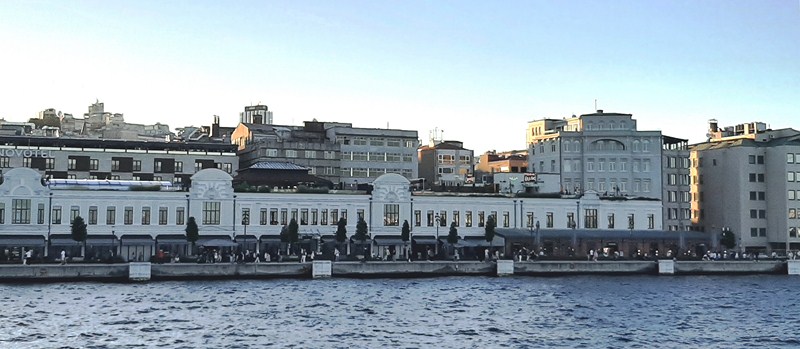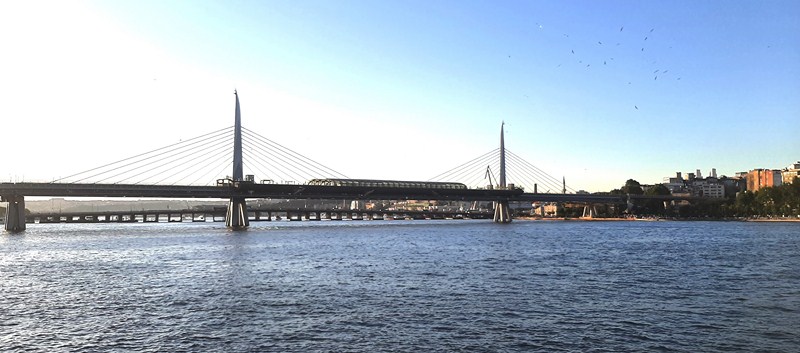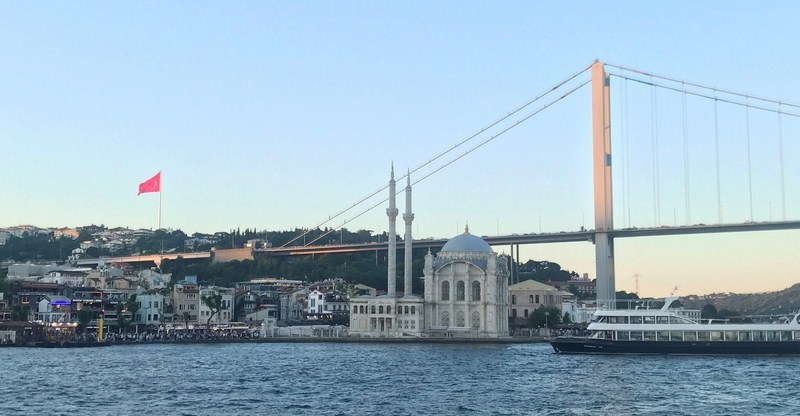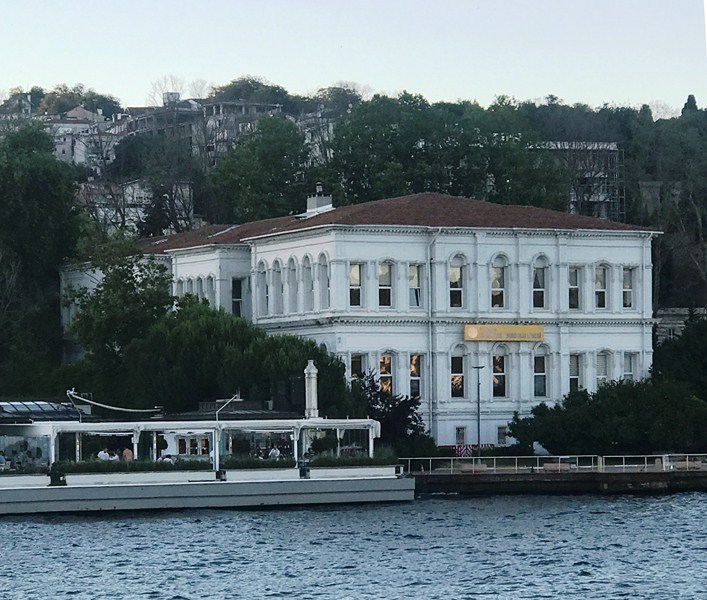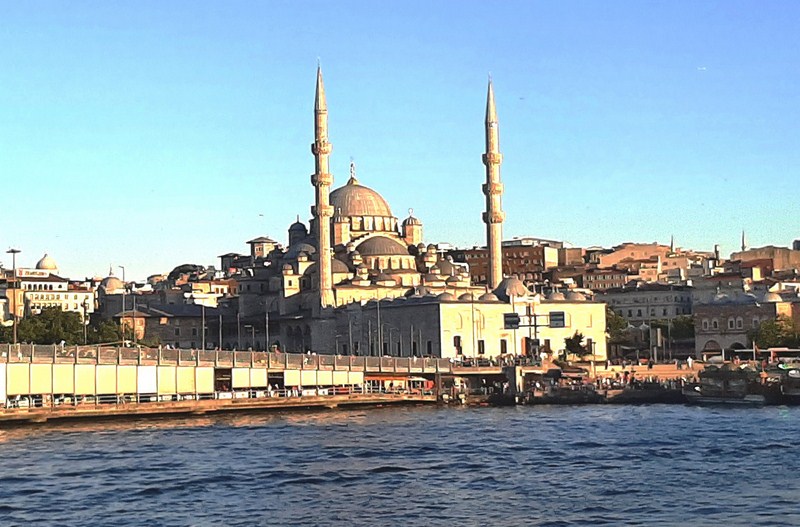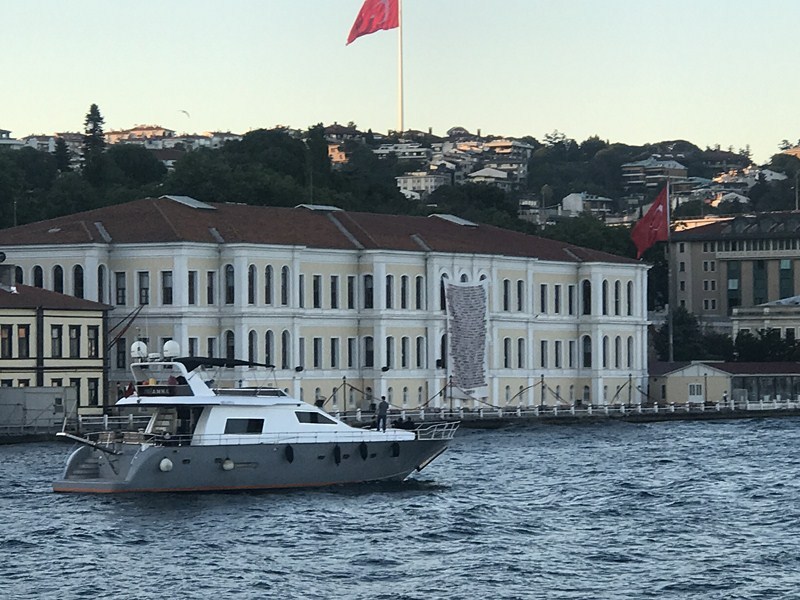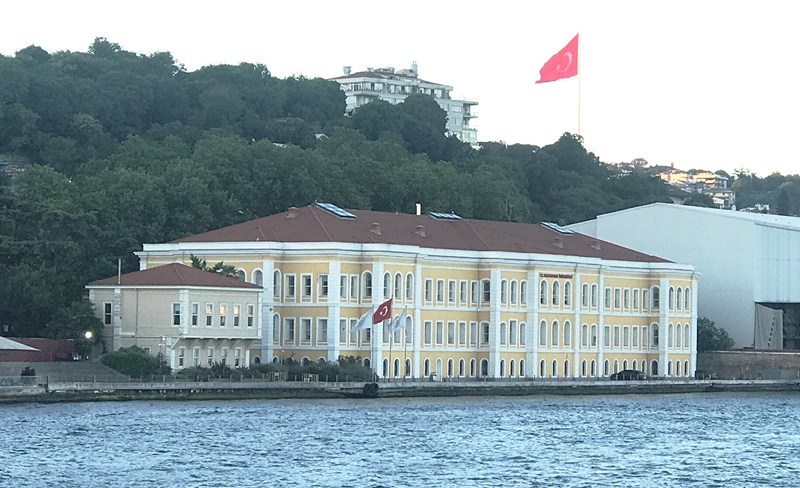Part of Scottish Highlands Tour
From the Three Sisters Viewpoint, another 45-min. (49.56 km.) drive brought us to Spean Bridge, a small and attractive village This prominent landmark, visible from the A82, offers views across the River Spean valley to the peaks of Ben Nevis and Aonach Mòr to the south.
Check out “Three Sisters Viewpoint”
The village, nestled at the southern end of the Great Glen, was named for the Highbridge, over the River Spean, built by famed military road and bridge-builder Gen. George Wade in 1736 (only the piers now remain).
This was believed to be the place of the first Jacobite Uprising action in 1745, called the Highbridge Skirmish, where a small force of 11 men and one piper, all Keppoch MacDonalds, fooled government troops into thinking the bridge was heavily defended. These forces were then reported to be chased to Loch Oich, at which place they then surrendered. The village is best known for its iconic Commando Memorial.
Check out “Commando Memorial”
During our short stopover, we dropped by Spean Bridge Mill which has a wide selection of knitwear, accessories and gifts. Homemade food, tea and coffee is also available at the coffee shop. The resident weaver there demonstrates his craft on impressive Hattersley Looms. The Whisky Shop beside it boasts over 150 different Scottish malts.
Spean Bridge Mill: Station Rd, Spean Bridge PH34 4EP, United Kingdom Tel: +44 1397 712260. E-mail: speanbridge@ewn.co.uk.
The Hairy Coo: Suites 6 & 7, Administrative Office Only, St. John’s Studios, 46A Constitution St., Leith, Edinburgh EH6 6RS, United Kingdom. Tel: +44 131 212 5026. E-mail: contact@thehairycoo.com. Website: www.thehairycoo.com.
How to Get There: Spean Bridge is located around 15.1 kms. (9.4 mi., a 15-min. drive), via the A82, northeast of Fort William in the Scottish Highlands.


